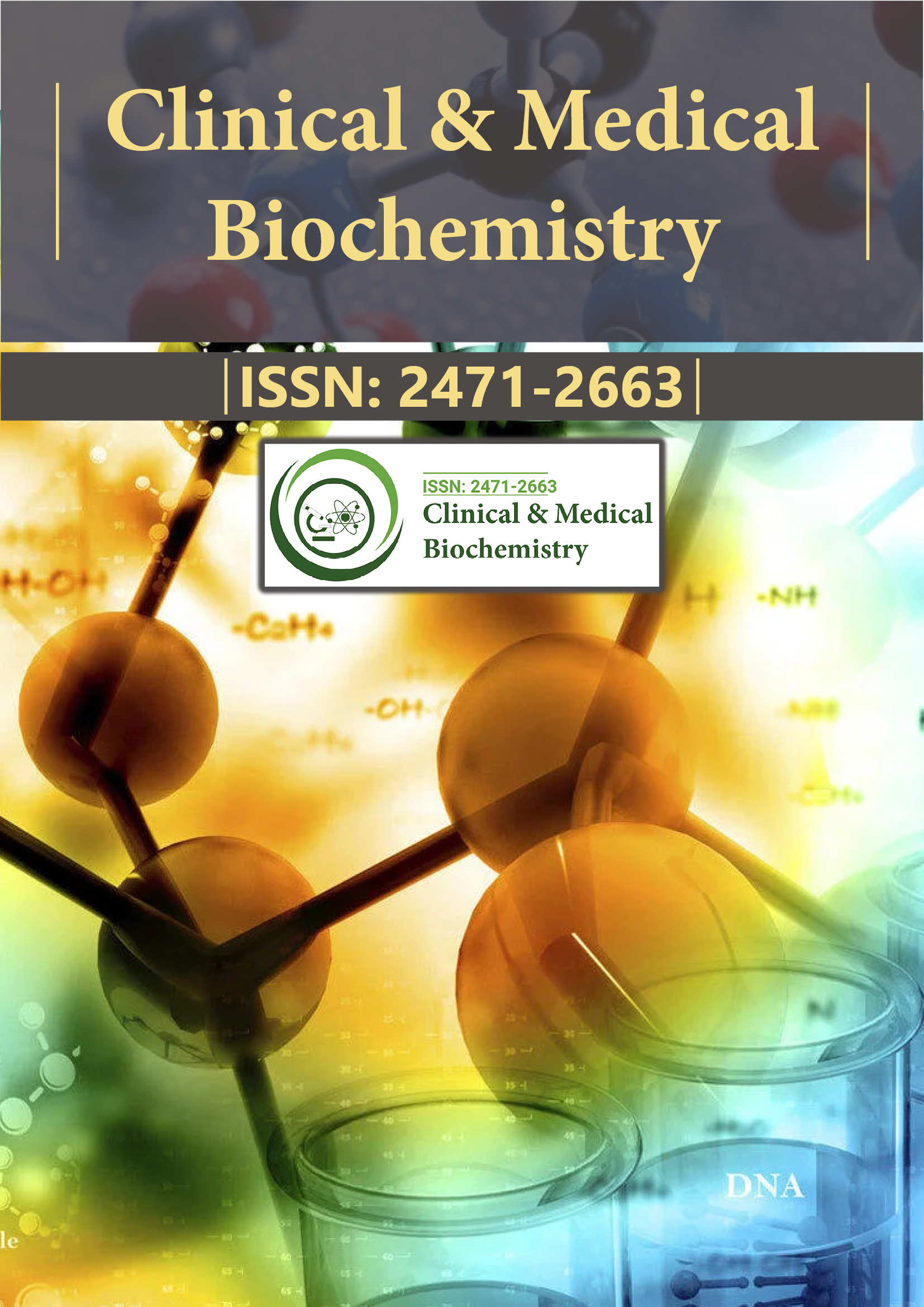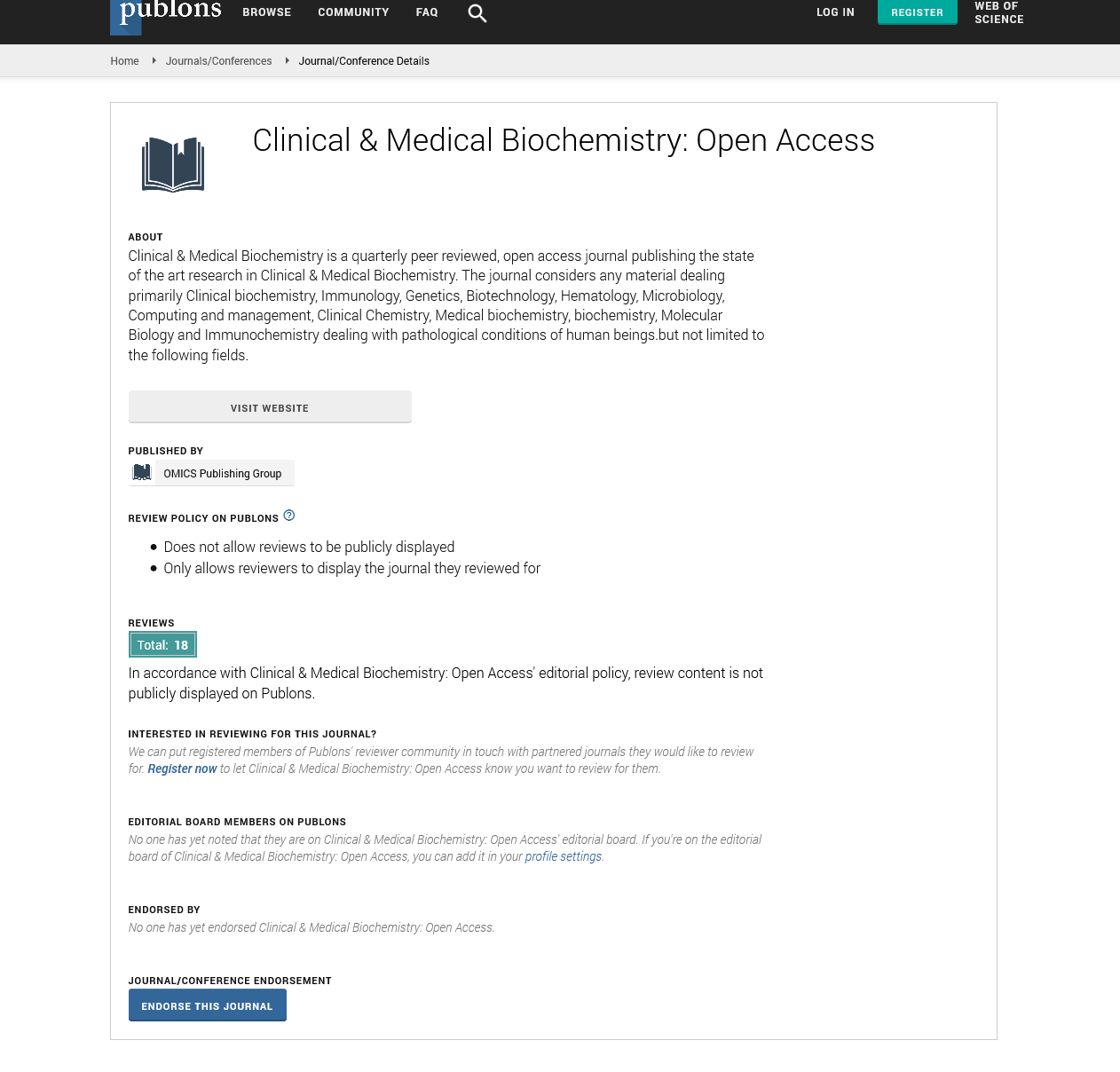Indexed In
- RefSeek
- Directory of Research Journal Indexing (DRJI)
- Hamdard University
- EBSCO A-Z
- OCLC- WorldCat
- Scholarsteer
- Publons
- Euro Pub
- Google Scholar
Useful Links
Share This Page
Journal Flyer

Open Access Journals
- Agri and Aquaculture
- Biochemistry
- Bioinformatics & Systems Biology
- Business & Management
- Chemistry
- Clinical Sciences
- Engineering
- Food & Nutrition
- General Science
- Genetics & Molecular Biology
- Immunology & Microbiology
- Medical Sciences
- Neuroscience & Psychology
- Nursing & Health Care
- Pharmaceutical Sciences
Commentary - (2023) Volume 9, Issue 5
Genomic Complexity and Immune Challenges in Pleomorphic Rhabdomyosarcoma (PRMS)
Baimei Huang*Received: 01-Sep-2023, Manuscript No. CMBO-23-23157; Editor assigned: 04-Sep-2023, Pre QC No. CMBO-23-23157 (PQ); Reviewed: 18-Sep-2023, QC No. CMBO-23-23157; Revised: 25-Sep-2023, Manuscript No. CMBO-23-23157 (R); Published: 02-Oct-2023, DOI: 10.35841/2471-2663.23.9.189
Description
Pleomorphic Rhabdomyosarcoma (PRMS) is a rare and aggressive soft tissue malignancy predominantly affecting adults. PRMS is a high-grade soft tissue sarcoma that poses significant clinical challenges due to its aggressiveness and resistance to conventional therapies. While advances in cancer genomics have resolved the genetic bases of many malignancies, PRMS remains unrecognized, because of its low incidence. These tumor suppressor genes are essential for maintaining genomic stability and regulating cell cycle progression. Pleomorphic rhabdomyosarcoma is a rare subtype of rhabdomyosarcoma characterized by the presence of undifferentiated, pleomorphic (varied in appearance) spindle cells. Unlike embryonal and alveolar rhabdomyosarcoma, which primarily affect children and adolescents, PRMS predominantly afflicts adults, typically in their sixth or seventh decade. PRMS presents significant clinical challenges due to its aggressive behavior and resistance to traditional therapeutic approaches, including surgery, radiation, and chemotherapy.
A deeper understanding of the genetic alterations driving PRMS is critical for developing more effective treatments. The TP53 gene, often referred to as the "guardian of the genome," encodes the p53 protein, a master regulator of cell death. In response to cellular stress and DNA damage, p53 direct a complex network of cellular responses, including cell cycle arrest, DNA repair, senescence, or apoptosis. TP53 mutations are common in many cancers, leading to the loss of these essential regulatory functions. The RB1 gene encodes the Retinoblastoma Protein (pRB), a key regulator of the cell cycle. pRB prevents cell division by inhibiting the activity of transcription factors required for cell cycle progression. Loss of RB1 function releases uncontrolled cell growth and is associated with several cancers. These genetic aberrations represent defining features of PRMS and underscore their potential roles in disease progression. The complete loss of TP53 and RB1 in PRMS carries significant implications: TP53 and RB1 are pivotal for maintaining genome stability. Their loss in PRMS is associated with genomic instability, characterized by a higher frequency of genetic mutations and chromosomal aberrations. RB1 loss disrupts cell cycle regulation, leading to uncontrolled cell proliferation—a distinguishing characteristic of cancer.
Dysregulated cell cycle progression contributes to the aggressive phenotype of PRMS. The loss of TP53 and RB1 in PRMS is strongly associated with increased genomic instability. Genomic instability manifests as structural variations, copy number alterations, and mutational signatures that collectively contribute to the heterogeneity of PRMS. These complex genomic changes create a heterogeneous tumor microenvironment with diverse cell populations. The immune microenvironment of PRMS is characterized by limited immune infiltrate compared to some other malignancies. This lack of immune cells may influence the disease's progression and response to treatment. The complex genome alterations and low immune infiltrate in PRMS may contribute to immune evasion mechanisms employed by the tumor.
These mechanisms include immune checkpoint signaling and tumor-induced immunosuppression, further complicating treatment strategies. Therapeutic strategies that target genomic instability, such as synthetic lethality-based approaches, hold potential for treating PRMS with TP53 and RB1 loss. These strategies utilize the increased susceptibility of genetically unstable cancer cells to specific treatments. Despite the low immune infiltrate in PRMS, immunotherapeutic approaches like immune checkpoint inhibitors and adoptive cell therapies should be explored. Combining these approaches with other treatments may enhance antitumor immune responses and improve outcomes. Further characterizing the genomic alterations and mutational view of PRMS to identify potential therapeutic vulnerabilities. Investigating novel immunotherapeutic strategies to overcome immune evasion mechanisms and enhance antitumor immune responses.
Conclusion
Complete loss of TP53 and RB1 in PRMS represents a defining genetic feature associated with increased genome complexity and limited immune infiltrate. Understanding the implications of these genetic alterations is essential for developing targeted therapies and exploring immunotherapeutic approaches that may improve outcomes for patients with this complex and aggressive soft tissue sarcoma.
Citation: Huang B (2023) Genomic Complexity and Immune Challenges in Pleomorphic Rhabdomyosarcoma (PRMS). Clin Med Bio Chem. 9:189.
Copyright: © 2023 Huang B. This is an open-access article distributed under the terms of the Creative Commons Attribution License, which permits unrestricted use, distribution, and reproduction in any medium, provided the original author and source are credited.

